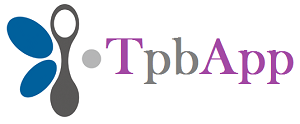Retail Analysis: Utilizing Annotation Tools for Market Trend Insights
The retail landscape is constantly evolving, shaped by consumer behavior, technological advancements, and market dynamics. To stay competitive, businesses must continuously analyze market trends and adapt their strategies accordingly. Annotation tools have emerged as invaluable assets in this realm, enabling retailers to gain deeper insights into market trends and make informed decisions. Let’s explore how annotation tools are transforming retail analysis and why choosing a trusted provider is crucial.
Unlocking Deeper Market Insights
Retailers have access to vast amounts of data, from sales figures to customer feedback. However, making sense of this data and extracting meaningful insights can be challenging. Annotation tools simplify this process by allowing analysts to mark up reports, highlight key data points, and add detailed notes. This capability helps identify patterns and trends that might otherwise go unnoticed.
For instance, a retail analyst examining sales data from various stores can use an annotation tool to highlight significant trends, such as spikes in sales during certain times of the year or the popularity of specific products. These annotations can then be shared with the marketing team, informing their campaigns and promotional strategies.
Enhancing Visual Data Analysis
Visual data, such as graphs, charts, and images, plays a crucial role in retail analysis. Annotation tool enable analysts to enhance these visuals with comments, highlights, and markings, making the data more accessible and understandable. This visual approach helps teams quickly grasp complex information and make data-driven decisions.
Consider a scenario where a retailer is analyzing customer foot traffic patterns in their stores. An annotation tool can be used to mark up heat maps with insights and observations, such as identifying areas with the highest traffic or noting times of day with peak activity. These annotated visuals provide a clear and actionable overview of customer behavior, guiding store layout adjustments and staffing decisions.
Facilitating Cross-Department Collaboration
Retail analysis often involves input from various departments, including marketing, sales, and product development. Effective collaboration among these teams is essential for developing comprehensive strategies. Annotation tools provide a unified platform where team members can share their insights and feedback in real time, fostering better communication and collaboration.
For example, a product manager might use an annotation tool to mark up a sales report with suggestions for product improvements based on customer feedback. This annotated report can then be shared with the product development team, who can incorporate these insights into their design process. This collaborative approach ensures that all departments are aligned and working towards common goals.
Streamlining Reporting and Presentation
Creating reports and presentations is a critical part of retail analysis. Annotation tools streamline this process by allowing analysts to annotate and organize their findings directly within the documents. This capability ensures that reports are detailed, accurate, and easy to understand.
Imagine an analyst preparing a quarterly sales report for a retail chain. Using an annotation tool, they can highlight key trends, add comments to explain significant data points, and include recommendations for future strategies. This annotated report provides a clear and comprehensive overview of the business’s performance, enabling stakeholders to make informed decisions.
Supporting Real-Time Market Adjustments
The retail industry is fast-paced, and market conditions can change rapidly. Annotation tools support real-time analysis and adjustments by enabling analysts to quickly mark up and share their findings. This agility allows retailers to respond swiftly to market changes and stay ahead of the competition.
For instance, if a sudden shift in consumer preferences is detected, an analyst can use an annotation tool to highlight this trend and share it with the marketing team. This real-time insight enables the team to adjust their campaigns and product offerings promptly, capitalizing on the new trend and maximizing sales.
Choosing a Trusted Annotation Tool Provider
While the benefits of annotation tools are clear, it’s crucial to choose a tool from a trusted provider. A reputable provider ensures that the tool is reliable, secure, and user-friendly. They offer robust customer support and regular updates, ensuring that the tool remains effective and up-to-date.
Using an annotation tool from a trusted provider also ensures that sensitive business data is protected. Retail analysis often involves proprietary information, and a reputable provider will have stringent security measures in place to safeguard this data. Additionally, trusted providers offer comprehensive training and support, helping teams maximize the tool’s potential and integrate it seamlessly into their workflows.
Conclusion
Annotation tool is revolutionizing retail analysis by unlocking deeper market insights, enhancing visual data analysis, facilitating cross-department collaboration, streamlining reporting and presentation, and supporting real-time market adjustments. By choosing a trusted provider, retailers can leverage these tools to their fullest potential, ensuring that their strategies are informed, data-driven, and responsive to market dynamics. Embracing these digital innovations is a step towards a more efficient, insightful, and competitive retail business.

